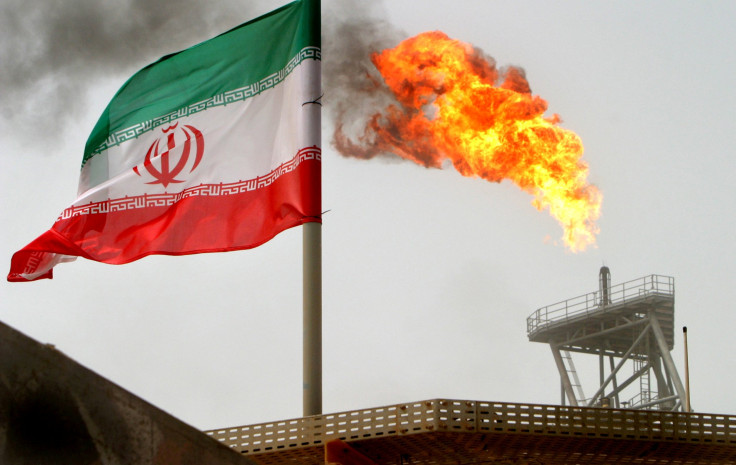Oil Prices: Could Iran Push Crude Back Into The Triple Digits?

Oil market conditions have changed dramatically over the past few months. The market has gone from having too much oil, to being in danger of not having enough to meet growing demand. This shift recently prompted OPEC to begin turning some of its pumps back on several months earlier than anticipated. However, that might not be enough given the number of supply problems within the industry, which could worsen as sanctions against Iran take effect later this year. Under a worst-case scenario, Iran could cause crude prices to skyrocket well into the triple digits, according to some analysts.
This article originally appeared in The Motley Fool.
The list of supply problems continues to grow
After being inundated with oil the past few years, the market shifted toward an imbalance of not having enough. That's partly by design, as OPEC and its partners have been holding back about 1.8 million barrels per day (BPD), or about 2% of global demand. However, new supply issues around the world have taken more oil off the market, causing oil storage levels to fall much faster than expected, which has sent the price of crude up 20% this year to the mid-$70s.
In Canada, a power outage at the Syncrude facility, whose majority owner is Suncor Energy (NYSE:SU), has taken its 360,000 BPD offline, which represents about 10% of the country's output. Initially, Suncor thought Syncrude would be back at full capacity by the end of July. However, Suncor now estimates that production won't hit full speed until early to mid-September.
At the same time Syncrude is offline, supplies from Libya are falling after more political unrest caused the closing of several oil-exporting ports. Because of that, the head of the country's national oil company said that "today, production is 527,000 BPD, tomorrow it will be lower, and after tomorrow it will be even lower, and every day it will keep falling." That's less than half the country's production level before fighting broke out again earlier this year.
Likewise, civil unrest and economic turmoil in Venezuela have taken a toll on the country's oil supplies. Production in that country has declined by 450,000 BPD, or 23%, over the last year, and could fall a further 500,000 BPD, according to analysts.
Meanwhile, the Permian Basin is running out of room in its oil pipelines and could hit capacity within the next three to four months, in the view of leading regional producer Pioneer Natural Resources (NYSE:PXD). Because of that, drillers are leaving a record number of wells uncompleted while others are slowing their drilling pace. Meanwhile, Pioneer Natural Resources believes that some producers might even need to shut off producing wells because that oil will have nowhere to go until later next year, when new pipelines come online.
Iran: The wild card in the oil market
All these supply issues are coming at a time when new sanctions are about to hit Iran, which will force the country to reduce its oil exports. It's unclear how much this will impact Iran's oil supplies. Most analysts believe the sanctions will remove 500,000 to 1 million BPD from the oil markets, which is manageable since other OPEC members have agreed to increase their output to compensate for this loss.
However, if all countries comply with the sanctions, it could remove from 2 million to 2.5 million BPD from the market. If that scenario comes to pass — which would completely shut Iranian oil out of the market — it could add $50 to the price of a barrel of oil, pushing it over $120, in the view of analysts at Bank of America Merrill Lynch. That's because the industry can't offset that lost supply even if Saudi Arabia pumps at full capacity.
Meanwhile, Iran has threatened to block the flow of oil out of the Persian Gulf by choking off the Strait of Hormuz if it's shut off from the global oil market. That would disrupt the 17 million BPD that sail through the region, a significant chunk of the world's oil supply — roughly 20% of global oil demand and 35% of the seaborne oil trade. That scenario would likely cause oil prices to go hyperbolic. According to analysts at Global FX, crude would quickly hit $160 a barrel if Iran closed this key oil choke point, while another analyst thought crude could touch $250 a barrel.
However, with the U.S. Navy stationed in the region to ensure the safe passage of oil tankers, any attempt by Iran to shut down the Strait of Hormuz would likely be short-lived. Still, crude could rocket into the triple digits until the situation calms down.
Interesting days in the oil market
Pressure on oil supplies has helped drive up the price of crude in recent months, taking many oil stocks with it. This situation is increasing the risks for a big-time spike in oil due to the looming sanctions on Iran, which could remove even more oil from the market when supplies are falling short. It's a scenario investors should watch, because while a super spike in crude prices would be a boon to oil stocks, it could derail the global economy, especially if the trade war continues escalating.
Matthew DiLallo has no position in any of the stocks mentioned. The Motley Fool has no position in any of the stocks mentioned. The Motley Fool has a disclosure policy.





















